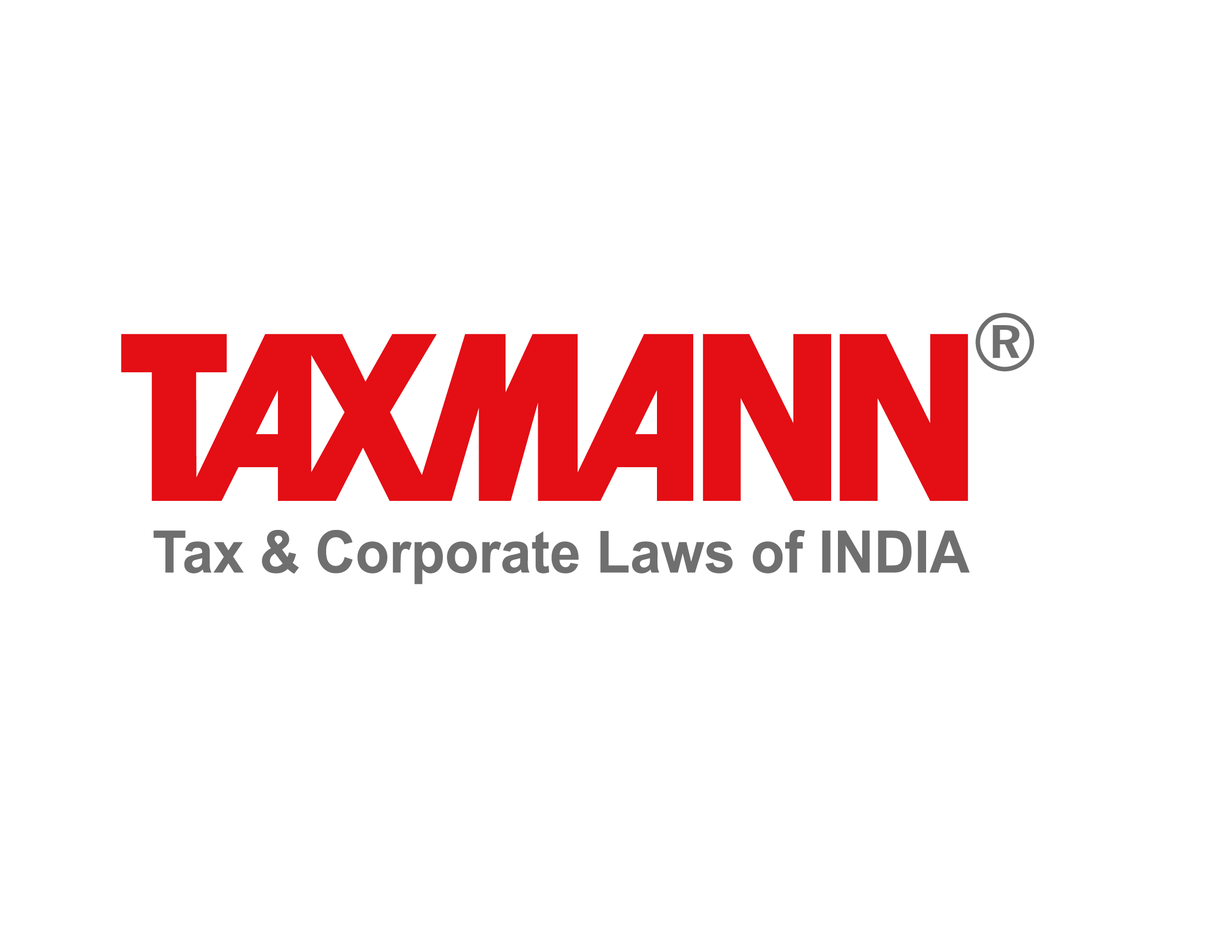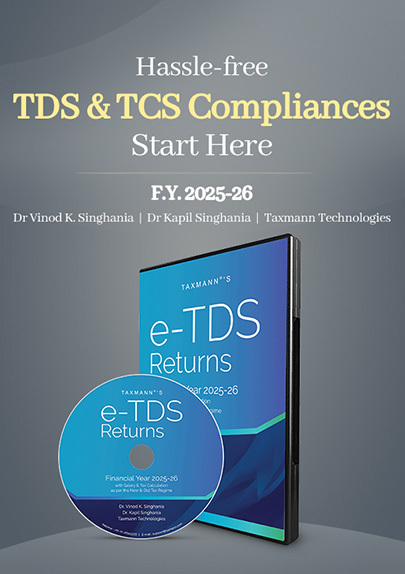[Analysis] ITR-B Form Notified | Everything You Need to Know
- Blog|Income Tax|
- 10 Min Read
- By Taxmann
- |
- Last Updated on 10 April, 2025

ITR-B is a specialised Income Tax Return form introduced under Rule 12AE for taxpayers who undergo a search under Section 132 or a requisition under Section 132A on or after 01-09-2024. This form is filed pursuant to Section 158BC, which mandates furnishing a consolidated return for undisclosed income identified during the block period. ITR-B streamlines the reporting of both disclosed and undisclosed income, ensuring compliance and efficient assessment in search cases under Chapter XIV-B of the Income-tax Act.
Table of Contents
- Introduction
- What is ITR-B?
- Who Can File a Return in ITR B?
- How to File the ITR-B?
- How to Fill ITR-B?
- Questions that Remain Unanswered
1. Introduction
The Finance (No. 2) Act 2024 reintroduced the block assessment scheme by substituting Chapter XIV-B (Sections 158B to 158BI) in cases where a search under Section 132 or a requisition under Section 132A has been made on or after 01-09-2024. The scheme was reintroduced because the absence of a legal requirement for consolidated assessments in search cases has created a situation where only the time-barring year could be reopened annually for the searched assessee. This led to staggered search assessments, extending the search assessment process for up to ten years. A block assessment scheme was reintroduced to make the assessment in search cases more cost-effective, efficient, and meaningful. Under this scheme, the Assessing Officer (AO) shall proceed to assess or reassess the total undisclosed income of the concerned person for the block period in accordance with the provisions of this Chapter.
Despite introducing the Chapter with effect from 01-09-2024, it did not come into force meritoriously due to three main factors –
- No ITR Form was notified.
- Though the objective of this Chapter is to assess the undisclosed income, the extant provision used the term “total income” instead of “total undisclosed income”.
- Section 158BB provided a circuitous approach to compute the total income and undisclosed income of the block period. It deduced undisclosed income by excluding disclosed income from total income.
ITR-B has been notified now vide Income-tax (Tenth Amendment) Rules, 2025[1] and the other two issues have been fixed by the Finance Act 2025 with retrospective effect from 01-09-2024.
2. What is ITR-B?
A new Rule 12AE has been notified, prescribing the procedure and form ITR-B for filing the income tax return under Section 158BC.
3. Who Can File a Return in ITR B?
A person who is required to furnish the return of income under Section 158BC(1)(a) relating to any search initiated under Section 132 or requisition made under Section 132A on or after 01-09-2024 shall file it in Form ITR-B and be verified in the manner indicated therein.
4. How to File the ITR-B?
The ITR-B shall be filed electronically. A person whose accounts are required to be audited under Section 44AB, companies, and political parties must file it using the DSC. Other taxpayers can file it either with the DSC or under an electronic verification code. However, the functionality to file it has not been provided yet on the e-filing portal.
5. How to Fill ITR-B?
ITR-B contains 9 Parts as follows –
- Part A – It seeks general information about the assessee, date of search, block period, details of return filing and the assessment status for each year falling within the block period, etc.
- Part B – It seeks the details of the disclosed income computed based on entries recorded in the books of account and other documents maintained in the normal course.
- Part C – It seeks the details of undisclosed income assessment year-wise.
- Part D – It seeks the details of undisclosed income head-wise and source-wise.
- Part E – It seeks the details of tax payable on undisclosed income.
- Part F – It seeks the details of tax paid on undisclosed income.
- Part G – It seeks the details of tax paid earlier, for which a credit is sought against undisclosed income.
- Part H – It seeks the details of tax paid earlier, for which a credit is sought against undisclosed income that has not been claimed earlier.
- Verification – It seeks the details of the authorised person verifying the ITR-B.
5.1 How to Fill Part A of ITR-B?
Part A of ITR-B seeks general information about the assessee, details of search operations, the status of the return filed for the block period, and the year of search. The overview of the key information sought in this part is as follows –
- The date on which the first and the last of the search authorisation or requisition is made.
- The relevant block period* in the DD/MM/YYYY format.
- DIN and date of notice issued under Section 158BC
- Details of returns previously filed for the block period.
- Limited information is sought for Assessment Years Y6 to Y2*, which are the date of filing of the ITR, the section under which the ITR was filed, the acknowledgement number and the status of the assessment on the date of initiation of the search.
- However, it seeks more details about Assessment Year Y1*. If the ITR for Assessment Year Y1 –
-
- Has been filed, the details of the income disclosed in the ITR shall be furnished. The assessee shall also provide other details of the ITR.
- Has not been filed, and the due date to furnish the ITR has not expired before the date of initiation of search, the assessee shall only provide the ITR Form (ITR 1 to 7) he will choose to furnish the return. The income for such period shall be furnished on a provisional basis in Part C, and it shall not be considered as a return furnished under Section 139(1) for the relevant assessment year.
- Has not been filed, and the due date to furnish the ITR has expired, the assessee will select the two check boxes of return not furnished and the due date to furnish the return has expired. The undisclosed income for such a period can be furnished in Part C.
- This segment also seeks income for Assessment Year Y0* and Y+1*. The break-up of such income shall not be furnished in this segment of Part A but in Part B. This segment shall be furnished as follows –
-
- Where the ITR for such period has been furnished, the income disclosed in the ITR and other details shall be furnished in this Part.
- Where the year is not complete, the amount of income for such period shall be furnished on a provisional basis.
- Where the year is complete, but the due date to furnish the ITR has not expired, the amount of income for such period shall be furnished on a provisional basis, and it shall not be considered as a return furnished under Section 139(1) for the relevant assessment year.
* The block period for the assessment under this Chapter shall be the last six years preceding the year in which a search was initiated or a requisition was made and an additional period starting from 1st April of the previous year in which the search was initiated or requisition made up to the date of execution of the last authorisation or requisition. For example, the block period in the following two scenarios has been explained in the table below –
- Scenario 1 – The search initiated on 1st July 2025 and concluded on 31st July 2025
- Scenario 2 – The search initiated on 15th March 2026 and concluded on 5th April 2026
| Block Period | Scenario 1 | Scenario 2 |
| Assessment Years Y1 to Y6 | AY 2020-21 to 2025-26 | AY 2020-21 to 2025-26 |
| Assessment Years Y0 | 1st April 2025 to 31st July 2025 | AY 2026-27 |
| Assessment Years Y+1 | – | 1st April 2026 to 5th April 2026 |
5.2 How to Fill Part B of ITR-B?
Part B seeks the details of the disclosed income computed by the assessee for the assessment years Y0 and Y+1 based on entries recorded in the books of account and other documents maintained in the normal course on or before the date of initiation of search or the date of requisition or the date of execution of the last of the authorisations.
This part seeks to break up income into five heads of income and the applicable tax rates with respect to special incomes.
5.3 How to Fill Part C of ITR-B?
The Finance Act 2025 provides a new methodology to compute the undisclosed income for the block assessment with retrospective effect from 01-09-2024 by inserting sub-section (1A), substituting sub-sections (1), (3) and (5), amending sub-section (2) and omitting sub-section (6) of Section 158BB. The new provision does not follow the circuitous method of first computing the total income, including disclosed and undisclosed income, and then reducing the disclosed income from such total income. It provides a straightforward method to compute the undisclosed income, which shall be the aggregate of undisclosed income declared by the assessee and determined by the assessing officer. Part C of ITR-B follows the new methodology for the computation of undisclosed income under Section 158BB, but it seeks the details of total income, including both disclosed and undisclosed income.
Part C has two tables which are mutually exclusive. These tables shall be filled as per the following –
- Table 1 shall be filled if the search or requisition is concluded in the same year in which it is initiated
- Table 2 shall be filled in case the date of execution of the last of the authorisations for search or requisition falls in a previous year subsequent to the year in which the search or requisition was initiated.
The assessee shall provide the amount of undisclosed income in this Part as well as the amount of disclosed income, which shall be either filled in by the assessee or auto-filled from other Parts –
| Particulars of Income | Amount |
| Income determined under Section 143(1) [A]
Add – Income assessed in the hands of the assessee before the date of initiation of search or requisition for the block period pursuant to [B] –
Add – Income declared in the return of income filed before the date of initiation of search or requisition for the block period [C] –
Add – Income computed by the assessee for the following periods based on entries recorded in the books of account and other documents maintained in the normal course on or before the date of initiation of search or, the date of requisition, or the date of execution of the last of the authorisations, as the case may be [D] –
Add – Income computed under the following provisions where return filing is not mandatory, and tax due on such income is paid by way of TDS [E] –
|
***
***
***
*** *** ***
*** |
| Total disclosed income for the block period [F = A + B + C + D + E] | *** |
5.4 How to Fill Part D of ITR-B?
This Part has two tables –
- Table D-I seeks the break-up of undisclosed income furnished in Part C into five heads of income.
- Table D-II seeks the break-up of undisclosed income furnished in Part C into various assets, such as money, bullion, jewellery, VDA, etc.
5.5 How to Fill Part E of ITR-B?
This Part computes the tax payable on the undisclosed income computed in Part C. This Part provides for the tax, surcharge, cess and interest payable under Section 158BFA.
- Tax Rate – Section 158BA(7) provides that the total income relating to the block period shall be charged to tax at the rate specified in Section 113, which is 60%.
- Surcharge – The table provides for the levy of the surcharge. This power has been given under the proviso to Section 113, which provides that the tax chargeable under this section shall be increased by a surcharge, if any, which may be levied by any Central Act. However, no surcharge rate has been mentioned in Section 2 of the Finance Act 2025.
- Cess – The Health and Education Cess is charged pursuant to the power given by Sections 2(11) and 2(12) of the Finance Act 2025. These provisions provide for the levy of cess on the tax computed under sub-sections (1) to (3) and sub-section (4) to (10) of Section 2, respectively, and none of these sub-sections provides the computation of tax on the income taxable under Chapter XIV-B. Accordingly, the tax computed should not be increased by Health and Education Cess.
In contrast to the above discussion, the form ITR-B computes the surcharge and cess on the tax computed on the undisclosed income, which conflicts with the provisions of the Income Tax Act.
5.6 How to Fill Parts F, G and H of ITR-B?
These parts seek the following details:
- Part F seeks the details of taxes paid on undisclosed income of the block period.
- Part G seeks the details of advance tax/self-assessment tax paid earlier, for which credit is sought against undisclosed income.
- Part H seeks the details of TDS/TCS for which credit is sought against undisclosed income and which has not been claimed earlier.
6. Questions that Remain Unanswered
Section 158BC mandates that a person subjected to a search on or after 01-09-2024 must file a return of income in response to a notice issued by the Assessing Officer. The notice requires a person to furnish the return within the prescribed period but not exceeding 60/90 days[2]. Rule 12AE, which prescribes Form ITR-B for filing such returns, has been made applicable retrospectively from 01-09-2024. However, this Rule was notified only on 7th April 2025, and until this date, Form ITR-B did not exist in Income-tax Rules, 1962. Even after its notification, the form is not yet functional on the e-filing portal, creating a procedural gap in compliance with the requirement of Section 158BC.
This raises a critical issue if a notice under Section 158BC is issued on or after 01-09-2024 but before the notification of Rule 12AE, i.e., 07-04-2025, the assessee was legally required to file a return, but no prescribed form was available to comply with this obligation. This effectively places the assessee in a compliance dilemma, where a statutory obligation exists, but no practical mechanism to fulfil it has been provided.
The Rule fails to address how relief will be extended to taxpayers when a search is conducted after 01-09-2024 and a notice under Section 158BC is issued. Further, Rule 12AE does not provide any solution where an assessee is considered a defaulter because the due date for filing a return under Section 158BC had lapsed before the availability of an online mechanism to file Form ITR-B.
[1] Notification No. 30/2025, dated 07-04-2025
[2] With retrospective effect from 01-09-2024, the Finance Act 2025 inserted a fifth proviso to Section 158BC(1)(a) to enable the extension in the time allowed to file the return by a further period of 30 days if certain conditions are fulfilled.
Disclaimer: The content/information published on the website is only for general information of the user and shall not be construed as legal advice. While the Taxmann has exercised reasonable efforts to ensure the veracity of information/content published, Taxmann shall be under no liability in any manner whatsoever for incorrect information, if any.

Taxmann Publications has a dedicated in-house Research & Editorial Team. This team consists of a team of Chartered Accountants, Company Secretaries, and Lawyers. This team works under the guidance and supervision of editor-in-chief Mr Rakesh Bhargava.
The Research and Editorial Team is responsible for developing reliable and accurate content for the readers. The team follows the six-sigma approach to achieve the benchmark of zero error in its publications and research platforms. The team ensures that the following publication guidelines are thoroughly followed while developing the content:
- The statutory material is obtained only from the authorized and reliable sources
- All the latest developments in the judicial and legislative fields are covered
- Prepare the analytical write-ups on current, controversial, and important issues to help the readers to understand the concept and its implications
- Every content published by Taxmann is complete, accurate and lucid
- All evidence-based statements are supported with proper reference to Section, Circular No., Notification No. or citations
- The golden rules of grammar, style and consistency are thoroughly followed
- Font and size that’s easy to read and remain consistent across all imprint and digital publications are applied




 CA | CS | CMA
CA | CS | CMA
